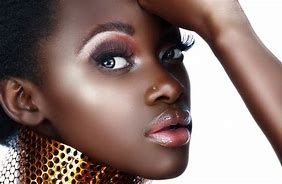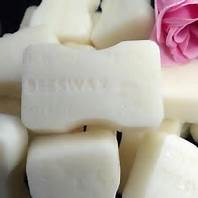Uninvited guests – drive away lice quickly












Uninvited guests – drive away lice quickly
It itches unpleasantly on the scalp and you want to scratch yourself until it bleeds. This is how most head lice stories begin. Lice are tiny parasites that prefer to live on the human scalp and feed on the blood. Particularly sharp mouthparts pierce the skin in order to suck up blood via a small snout. And that several times a day. The louse’s saliva keeps the blood from clotting. And that’s what causes the bad itching.
But research has found that fewer than one in five people feel itchy at all. If a sign at the day care center informs about an outbreak of lice, you should urgently examine all family members thoroughly, whether they are itchy or not. The wingless insects particularly like warm spots behind the ear or on the back of the neck. Apart from the disgust factor, the animals are not carriers of diseases and are therefore rather harmless.
lice life
Adult female lice attach their eggs to the hairline near the scalp. The new generation of lice hatch within about a week. After a third molt, it is an adult louse, 2–4 millimeters long, about the size of a sesame seed or a match head. After another 2 days, the fertilized females begin to lay eggs, up to ten eggs a day. The slightly smaller males live for only 2–3 weeks.
On the move
Lice can only climb from head to head if the affected strands of hair are touching. Children are probably more likely to get an infestation than their parents because they love cuddling and close contact. For a friendship selfie with the whole group, put your heads together and huddle together is often enough. Exchanging cuddly toys, pillows or other soft objects on which the lice settle for a short time can also help the wandering louse to reach the next head. Outside the head and without blood nourishment, the lice die within 2-3 days.
Discovery of the little guests
A head lice infestation is present when there is at least one living head louse on the head. Unfortunately, the lice are quick and shy of light and therefore the search is rather tedious. Head lice attach their small, pinhead-sized eggs to the hair near the scalp. Because they are so small, they can easily be overlooked or mistaken for dandruff. Scratching the white crumbs will have a hard time dislodging lice eggs from the hair, while dandruff should trickle down.
Reddening of the skin or small red spots on the scalp, especially in the neck area and behind the ears, can be an indication of a head lice infestation. Especially the area in the neck and behind the ears is preferred for laying eggs.
Effective control methods
There are basically three treatment methods with different mechanisms of action available for acute head lice infestation. The RKI im provides an assessment of all methods Head lice control leaflet for doctors.
With the mechanical method, the hair is first treated with a conditioner and then carefully combed out with a special lice comb. In this way it is possible to remove larvae or eggs from the hair after hatching. The application exclusively with the mechanical method promises little success for a complete liberation. It is only effective in combination with chemical or physical application.
The chemical method uses insecticide-based agents to treat lice. The active ingredients allethrin, permethrin or pyrethrum kill head lice by attacking the nervous system. If the lice come into contact with the poison, they convulse and can no longer move. This method is also only fully effective in combination with combing out with a lice comb.
In the physical method, silicone oils are used. These oils coat the body surface of lice and eggs, killing them quickly and effectively. Hair lotions with a proportion of essential oils, such as these, are particularly helpful WeFix Lice Lotion. They are completely harmless to humans. Here, too, combing out is incessant.
cleaning of the environment
A mountain of frozen stuffed animals and stacks of laundry and bedding isn’t going to help anyone. The time can be used better, for example when thinking about sustainability. Hairbrushes and combs can be cleaned with an old toothbrush, a hand brush, or simply set aside for a week. The lice cannot survive without a host. Pajamas, bed linen, towels and worn clothing washed at 60 °C will not survive a louse either.
Good to know
Children or adults infested with lice do not have to have a general medical certificate. However, community facilities such as kindergartens and schools that pass the information on to the health department must be informed. And of course everyone is only allowed to return to everyday life after successful treatment. With chemical or physical methods, this is already the case the day after the treatment, since no animal can have survived.
Articles-Latest
- Skin tags: Why they develop, and how to remove them
- So That’s Why Your Skin Gets Crepey As You Get Older
- Eye Infection from False Eyelashes
- Teeth stain removal and whitening solutions
- Benefits of collagen for skin
- Why vitamin E should be part of your skincare regime
- Can gray hair be reversed?
- Hair loss affects 1 in 10 women before the menopause – here’s how to treat it
- Conscious ageing and Black skin: What happens when Black does crack?
- Your skin color may affect how well a medication works for you — but the research is way behind
- The C word Cancer
- Astringents
- How does light therapy work? The science behind the popular skincare treatment
- The Most Offensive Fashion Police Criticisms of All Time
- Everything you need to know about lip filler migration, as told by the experts
- Pig semen and menstrual blood – how our ancestors perfected the art of seduction
- Everything you need to know about benzoyl peroxide
- We've bleached, relaxed, and damaged our hair to make ourselves look more white
- Will this be the year that facial filler is cancelled?
- Shock of the old: 10 painful and poisonous beauty treatments
Cosmetic ingredients
LOGIN
Who's On Line
We have 478 guests and no members online
Articles-Most Read
- Home
- White Bees Wax
- Leucidal
- Cosmetic Preservatives A-Z
- Caprylyl Glycol
- Cosmetics Unmasked - How Safe Are Colorants?
- Cosmetics Unmasked - Choosing Ingredients
- Cosmetics Unmasked - Colorants And Fragrances
- EcoSilk
- Toxic Beauty - Who's Looking At Cosmetics?
- Cosmetics Unmasked - Fragrances
- Microbes and Cosmetics
- Chemicals Lingering In The Environment
- Microbes and Safety Standards
- Yellow Bees Wax
- Potassium Sorbate
- Toxic Beauty - Hazardous To Your Health
- Synthetics In Cosmetics - The Industry Fights Back
- Fresh Goat's Milk Soap
- What's Happening in the USA - Cosmetic Regulations - Toxic Beauty
- Active Ingredients
- Cosmetics Unmasked - Listing Cosmetics
- Toxic Beauty - Cocktails and Low Doses
- Natural Waxes A-Z
- Natural Butters A-Z



